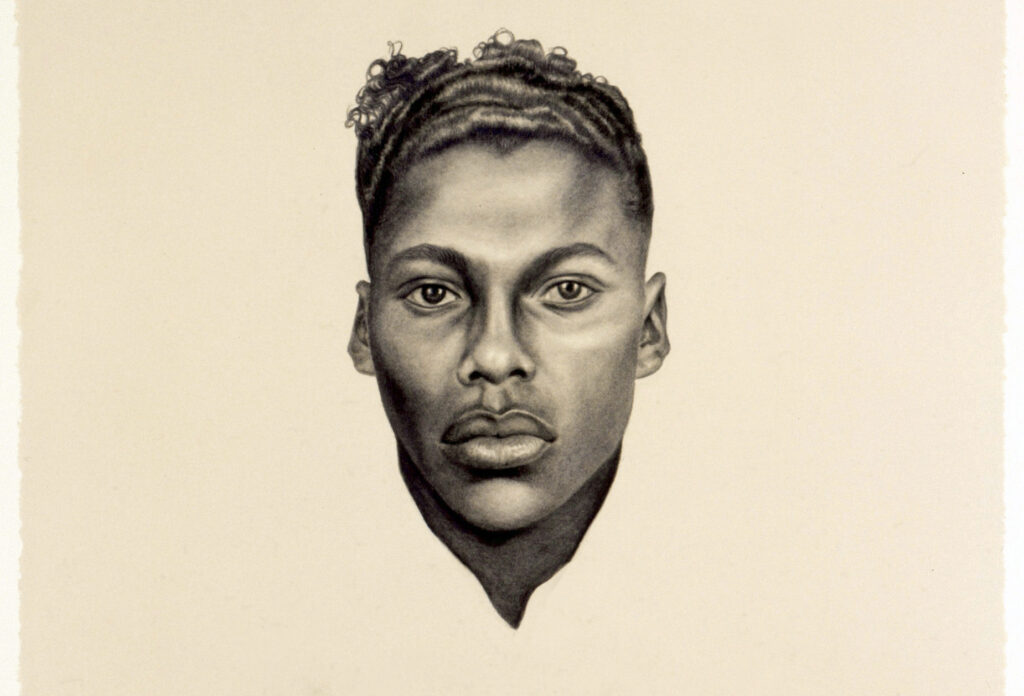Florida art show honors Black American heritage
The major National tour of Black artist Whitfield Lovell is on in South Florida at the Boca Raton Museum of Art.
The landmark exhibition Whitfield Lovell: Passages is in South Florida at the Boca Raton Museum of Art until May 21, and will continue across six states throughout the American South and the Midwest. This major national tour kicked off in Florida, a part of our country that is currently ground zero for national news about safeguarding Black American History and our collective American heritage.
The unexpected timeliness of this exhibition, and the fact that this national tour kicks off in Florida, is resonating powerfully with audiences who care about honoring African American heritage.
This landmark national tour is supported by the National Endowment for the Arts (NEA) and presented by the American Federation of Arts, and is drawing major audiences — especially since now is peak travel season, when millions of tourists visit Boca Raton, Miami, Fort Lauderdale and the Palm Beach areas of South Florida.
This is the largest exhibition ever presented of Lovell’s work that focuses on lost African American history, and raises universal questions about America’s collective heritage.
Organized by the American Federation of Arts (AFA) in collaboration with the artist, the exhibition is supported by the National Endowment for the Arts (NEA) and the Terra Foundation for American Art, and encompasses the entire first floor galleries of the Boca Raton Museum of Art. In another first, this is the first time these multi-sensory installations by Lovell are presented together in a museum-wide show of this monumental size and scope.
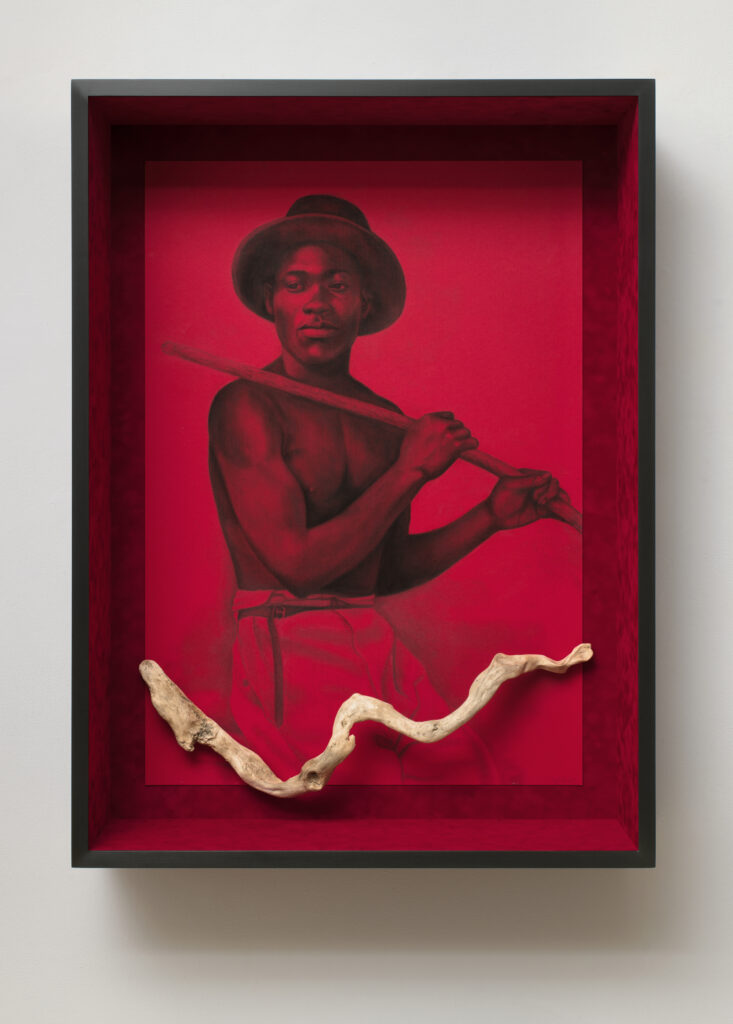
“These installations create a profound immersive experience that enables visitors to become participants in, not just observers of, the experience of these ancestors who were lost to time,” says Pauline Forlenza, the Director and CEO of American Federation of Arts. “Together, these works convey passages between bondage, freedom, and socioeconomic independence, promoting a deeper connection with African American histories through art. An exhibition of this magnitude would not be possible without the support of the National Endowment for the Arts, the Terra Foundation for American Art, and the six museums selected for this tour.”
Lovell is the recipient of a MacArthur Foundation Fellowship and is recognized as one of the world’s leading artistic interpreters of lost African American history. The internationally acclaimed artist is celebrated for his exquisitely hand-drawn, portraits (many are life-sized), drawn from historic photos he finds of anonymous individuals, which the artist combines with time-worn objects to raise universal questions about memory, American life, and reclaiming lost history that have been erased.
The works in this exhibition are anchored by images of everyday African Americans, from the 1860s to the 1950s (between the Emancipation Proclamation and the start of the Civil Rights Movement), a period of time the artist feels has been overlooked by the art world.
“I see the so-called ‘anonymous’ people in these vintage photographs as being stand-ins for the ancestors I will never know,” says Whitfield Lovell. “I see history as being very much alive. One day, 100 years from now, people will be talking about us as history.”
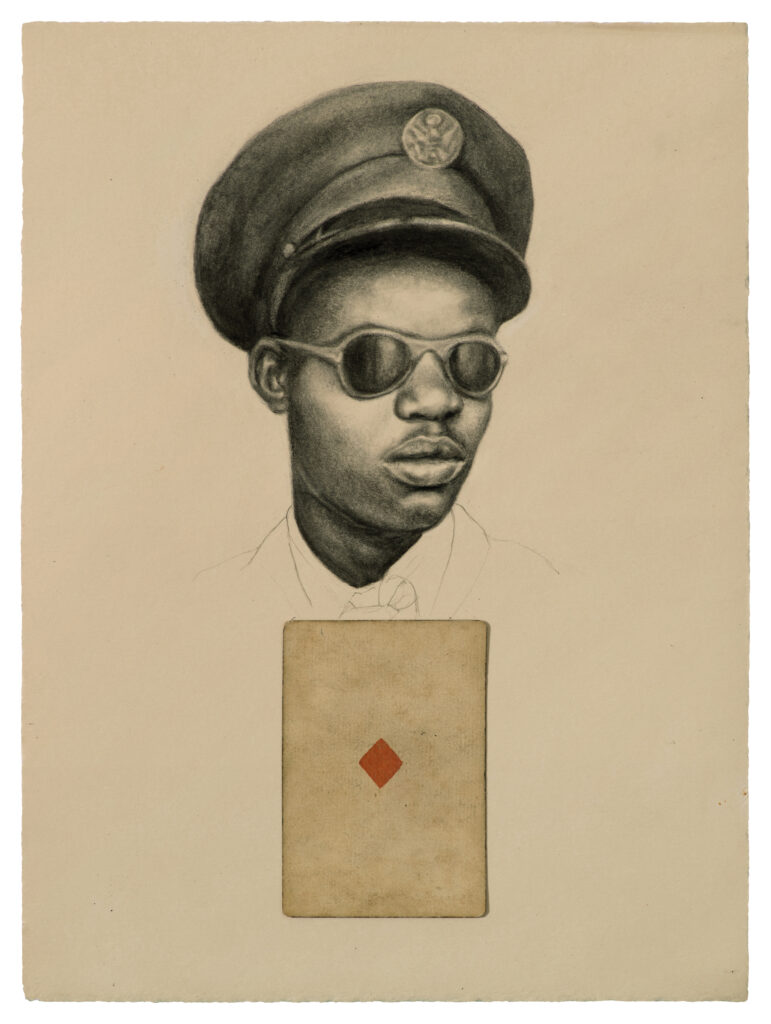
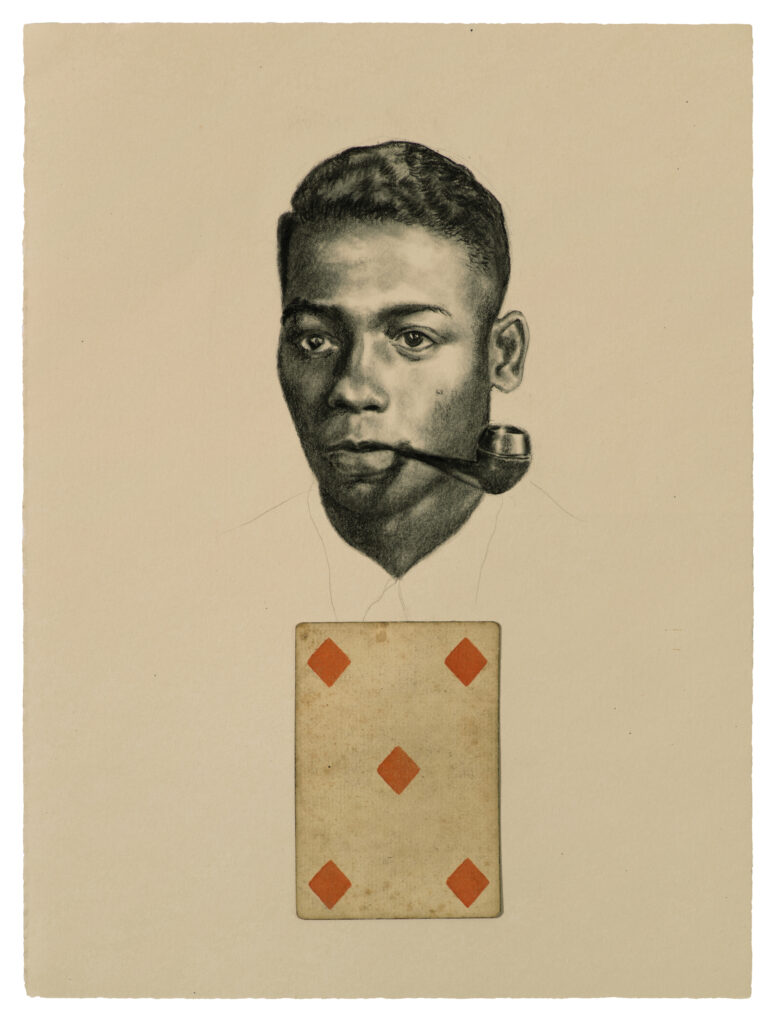
“The way I think about time is very different – I don’t think it really was very long ago that these things happened, it wasn’t that long ago that my grandmother’s grandmother was a slave,” adds Lovell.
“The ancient Native American principles say it takes seven generations to overcome a tragedy, so in this context of generations we can begin to grasp why we are at this point we are living in now,” adds Lovell.
“This is a milestone exhibition, and the Boca Raton Museum of Art is honored to be chosen as the first venue to premiere this national museum tour,” says Irvin Lippman, the Executive Director of the Boca Raton Museum of Art. “In our modern-day world, so feverishly focused on ever-decreasing attention spans, the depth of presence we experience when walking through Lovell’s immersive art reminds us that remembering the past is something that matters.”
Works by Lovell are featured in the permanent collections of major museums, including: the Whitney Museum of American Art, NY; the Metropolitan Museum of Art, NY; the Smithsonian American Art Museum, DC; the Smithsonian National Museum of African American History and Culture, DC; Pennsylvania Academy of the Fine Arts, PA; the Yale University Art Gallery; the Hunter Museum of American Art, Chattanooga, TN; The Brooklyn Museum, NY; the Studio Museum in Harlem, NY; Seattle Art Museum, WA, and many others.
Oprah is a fan
Lovell’s interest in spirituality, healing, and ritual, together with his use of reclaimed and found objects, aromas, music, and sound, has long informed his practice which investigates the circularity of life. “There were not a lot of role models for me as a young Black man wanting to be an artist, a decision I made when I was very young at the age of 13,” says Lovell. “I didn’t have a lot of examples telling me that being an artist was something that I could do. When I came along in the art world, Black people didn’t have gallery representation – we made art because we felt strongly that we had to make art. We found a way to make art.”
Fast-forward to now, and one of Oprah Winfrey’s most treasured artworks is Lovell’s tableau entitled Having, which she has kept in her office for decades (the wall-length charcoal image of two African American women features three vintage wood boxes filled with pennies, added by the artist). “These women were early entrepreneurs. I have looked at this every day from my desk for years, to remind me and inspire me that, yes, it can be done,” Oprah Winfrey told the Los Angeles Times about Lovell’s artwork.
Hear the artist speak
In these video conversations with Lovell, recorded in 2020 during the peak of the pandemic, the artist is described as Paying tribute to the daily lives of anonymous African Americans, inspired by images from his archive of vintage photographs, tintypes, and old postcards from the end of the Civil War to the beginning of the Civil Rights Movement, Lovell provides these unknown figures with identity (video from the Mott-Warsh Collection in Flint Michigan, one of the institutions that loaned works for this national tour).
Lovell’s hand-drawing virtuosity is rare in today’s world of technologically aided artmaking. The meticulously physical back-and-forth process is how the artist honors the person’s memory and their existence: he applies the charcoal, rubs it with his fingers to get the right tone, and then erases some to create the highlights.
“Drawing by hand is always a particular pleasure for me,” says Lovell. “Hand-drawing from the vintage photograph provokes the viewer to look more closely at the subject matter and to contemplate it more.”
By drawing these dignified portraits with grace and humanity, Lovell is honoring the memory of their suffering and perseverance. “The important thing is to make the art good, so that 100 years from now people would want to look at this work. As an artist, you have to find joy in the act of creating,” says Lovell.
Each realistic portrait is inspired by the antique photographs he finds in flea markets, discarded family albums, mug shots, and archives. Lovell renders each portrait directly onto old wooden boards with knots, holes, nails, traces of paint and other signs of age. On working with these vintage wood panels, what someone might consider to be a flaw in the found object becomes truly part of the artwork itself: “I’m working with historical images, and the wood itself has history already. The wood comes from old homes, where old souls once inhabited – so I think allowing the wood to have character is very important.” The striations of the wood often come through onto the faces of the unnamed persons.
Lovell then adds found household objects onto the wooden panel itself, or on the floor near each portrait. Finally, Lovell chooses a title for the tableau using words or phrases with multiple possible, often contradictory, meanings. He also uses titles of songs, and often incorporates recorded music of early Blues tunes, traditional slave songs, spirituals and gospel music. These tableaux inspire viewers to imagine how each person lived a full life, richly filled with nuances.
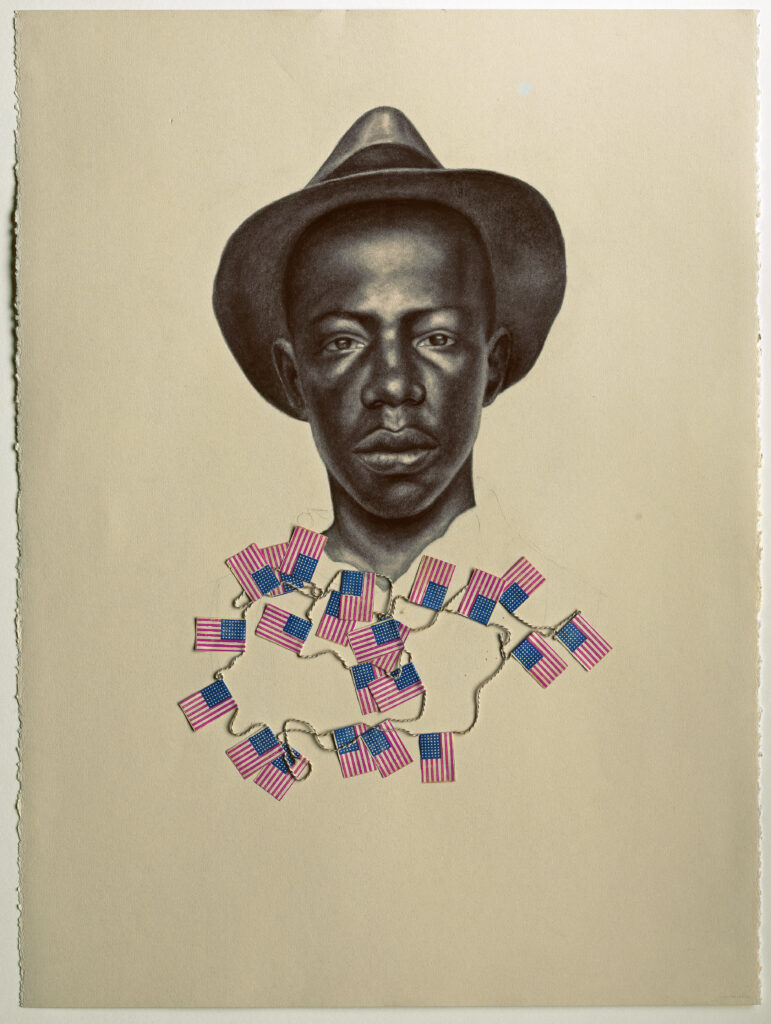
Whitfield Lovell: Passages opens with Lovell’s multimedia experience Deep River, honoring the perilous journey enslaved people took crossing the Tennessee River to find asylum at “Camp Contraband” in Chattanooga during the Civil War. The work is inspired by the rich legacy of African American resilience and community building in the passage from slavery to freedom. “Camp Contraband was a Union Army encampment where runaway slaves who could make it across the river were given sanctuary and protected from being recaptured by slave hunters,” says Lovell. The experiential work includes a haunting rendition of the traditional Spiritual “Deep River” with its elegiac lyric “I want to cross over into campground.”
Once behind Union army lines, these freedom seekers formed encampments of their own numbering in the thousands, creating communities of care and self-determination. By 1863, when the Emancipation Proclamation was issued by President Abraham Lincoln, tens of thousands of “contrabands” had enlisted and fought on the winning side of the Union Army. At least 10 percent of the Union Army was composed of African Americans, and ultimately these contraband camps became cornerstones of several Black communities in cities in the South.
The artist chose to use images of people from multiple time periods to represent how freedom is something we are always struggling with, during all times. Lovell invites viewers to contemplate the larger human quest for equality, and the pursuit of a better life that crosses beyond time and geography. The section of this installation entitled Flight features a wood cabinet, thirty-three suitcases, a music stand, chest, sheet music, chains, and rope. The suitcases emanate sounds of birds chirping to symbolize freedom and flight.
The exhibition also invites museumgoers to walk through another monumental, immersive installation entitled Visitation: The Richmond Project, which takes up an entire gallery. The artist describes Visitation as being about the nation’s first Black entrepreneurial community who settled in Jackson Ward, Richmond, Virginia, in the 1860s (known alternatively as “Black Wall Street” or “the Harlem of the South,” just blocks from the state capitol).
About the Boca Raton Museum of Art
Founded by artists, Boca Raton Museum of Art was established in 1950 as the Art Guild of Boca Raton. Now in its eighth decade, the organization has grown to encompass the Museum, the Art School, and a Sculpture Garden. Celebrated as one of South Florida’s leading cultural landmarks, the Museum provides educational programs and a robust exhibition schedule to the community, and to visitors from around the world.
About the American Federation of Arts
The American Federation of Arts is the leader in traveling exhibitions internationally. A nonprofit organization founded in 1909, the AFA is dedicated to enriching the public’s experience and understanding of the visual arts through organizing and touring art exhibitions for presentation in museums around the world, publishing exhibition catalogues featuring important scholarly research, and developing educational programs.

